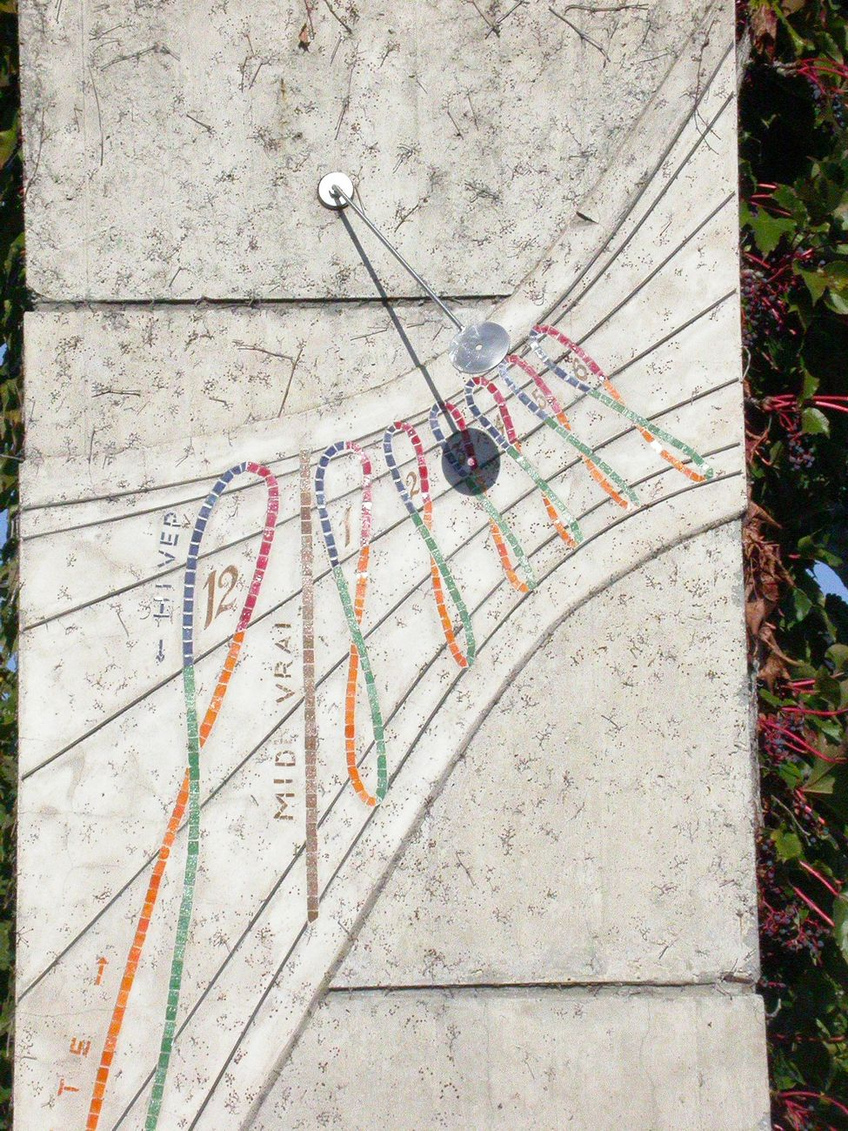

Time in its essence
Where does time come from? Where does it go? These are questions that seemingly have always existed in the minds of humans. However, time, one has to realise, is a concept that had to be invented first.
Very probably the concept of time was only introduced when man began to settle down and started agriculture. There are some fundamental reasons for the introduction of the concept of time: the process of aging, the fact of birth and passing away asks for an explanation. The regular returning of the seasons with the annual rebirth of nature, the phases of the moon and, of course, the rhythm of day and night suggest something cyclical. Man’s own singular existence and lifespan, however, call for a linear phenomenon, something with a clear starting point, a direction, and an ending.
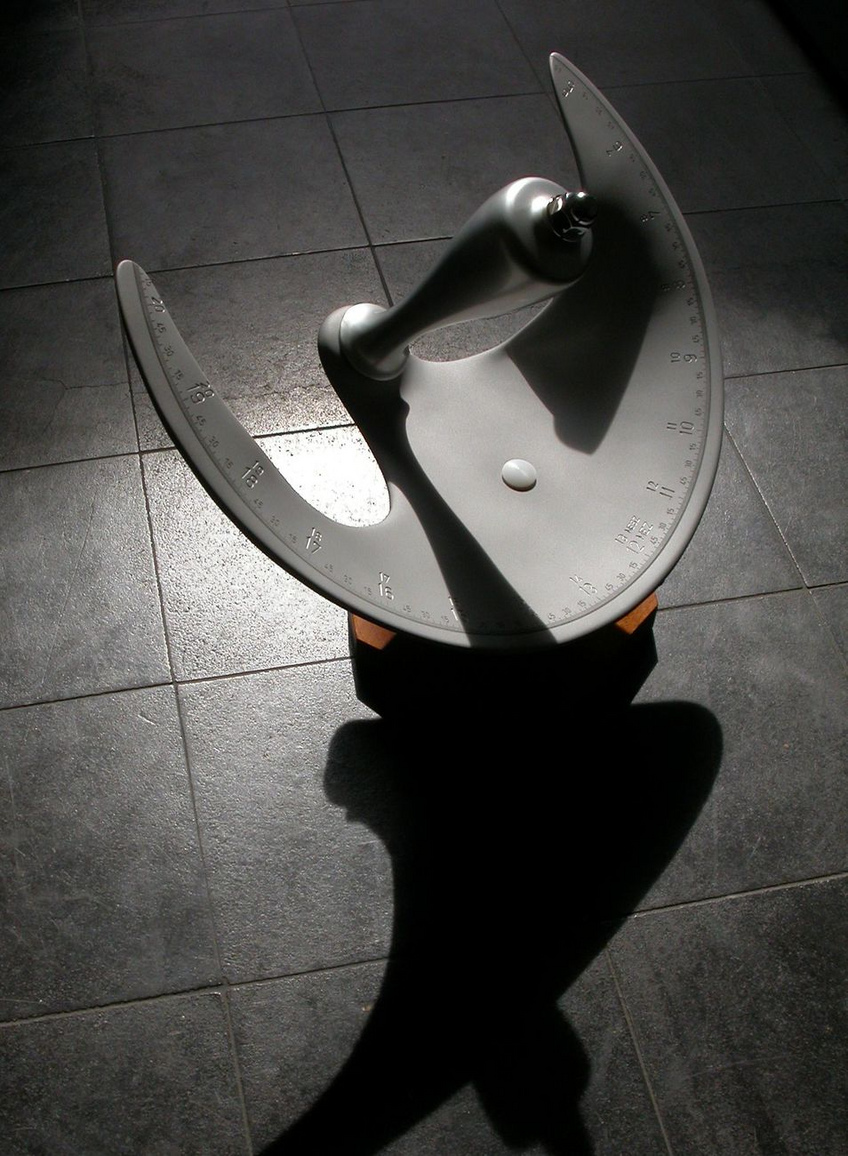
Thinking of time we invariably think of hours, minutes and seconds. These units, however, wouldn’t have been of much use for the first humans that thought of measuring time. They were thinking on a bigger scale. Thus, after the day, it was probably the year that was the second unit of time to be introduced. Together with it came the months. These two units were initially the only ones that would make sense to a farmer in prehistoric times. Thus, in a way, calendars can be called the first timepieces, helping man to orient himself within the year, reminding him when it is time to sow and to reap.
How the hour was born?
It was only when in the third millennium before Christ the first civilizations with cities appeared in Mesopotamia that people began to think in smaller units than the day. This became necessary because doing business with others necessitated establishing meetings. Ships had to be loaded with goods that had to arrive on time, the crew had to know when their vessel was supposed to leave in order to be in the right place at the right time. The interaction of people necessitated a common standard of time measuring.
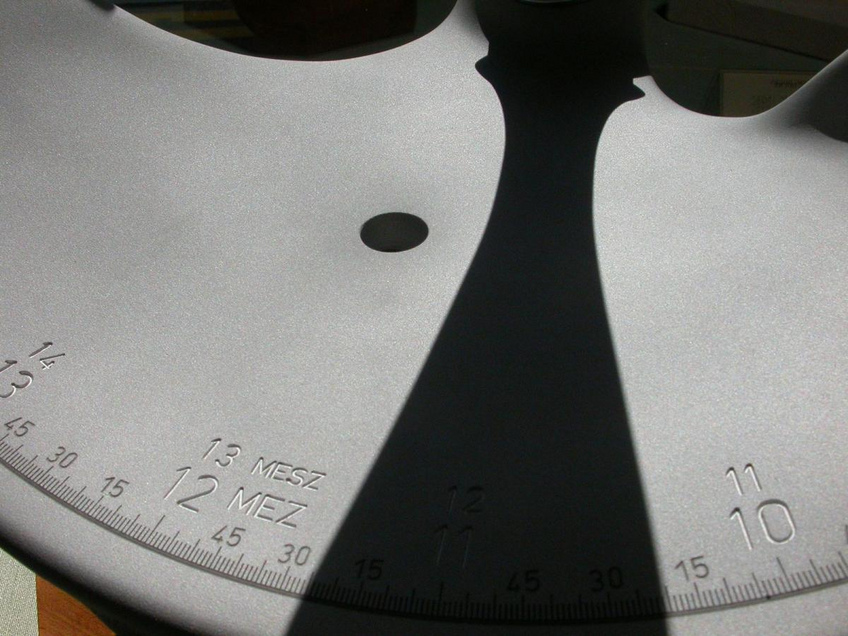
The rising and the setting of the sun are no good reference points because they vary with the seasons, so noon was defined as being the starting point for the division of the day into smaller units. The Mesopotamians used a calculating system based on the number 3. They divided the time span from one noon to the next into 24 units, making it divisible by 3, 4, 6, 8 and 12. The hour, that was thus created, proved to be unbeatable in its versatility. It has lasted for over 4000 years now and neither the Roman Empire nor the French Revolution who successfully introduced the decimal system in most other fields, succeeded in dethroning it. Being able to divide the day into 24 units necessitated an instrument to be able to indicate these divisions. Nothing lay closer than choosing the sun itself as the hour hand, or using a shadow as its projected image on the ground.
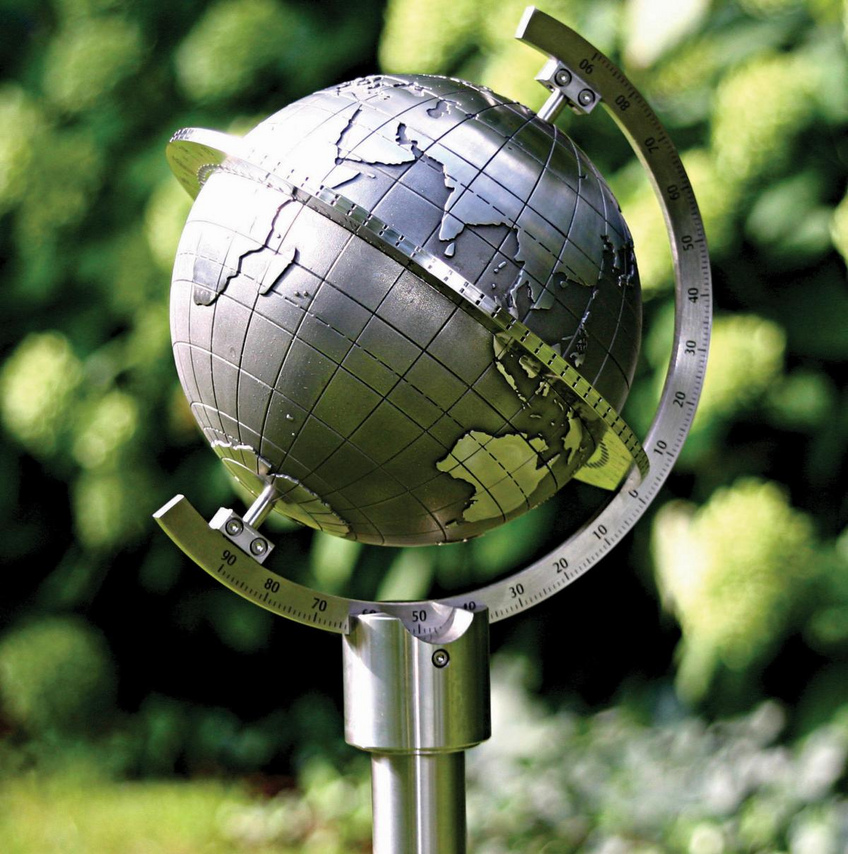
The call for timezones
The circumstance of living on a globe has various implications on timekeeping. Since the Earth is illuminated by the star which is closest to us, the sun, there is always only one half of our planet where it is day. The remaining 50% are in darkness, they lie in the night. Furthermore, there are only a limited number of places where it is exactly noon at a given moment. They are located on a line spreading from the North Pole to the South Pole, the meridian that is directly facing the sun.
As the Earth is slowly turning in an eastward direction, this line is moving westward across the surface of the planet. Places east of it are ‘post meridiem’, the ones west of the line are ‘ante meridiem’. Until late in the 19th century sundials were built to display local time. It is therefore no wonder that about every city in Europe possessed its own time, a fact that led to a lot of confusion with the advent of the railway that brought cities closer to each other than ever before. All of a sudden travelling people realized that the time on their watches didn’t correspond to the time they would encounter at their destination. Worse still, the railway societies were confronted by a serious problem when trying to synchronize timetables of different cities and countries. In the United States, where the east coast was connected to the west coast by a long railway line, accidents resulted from a lacking standard time.
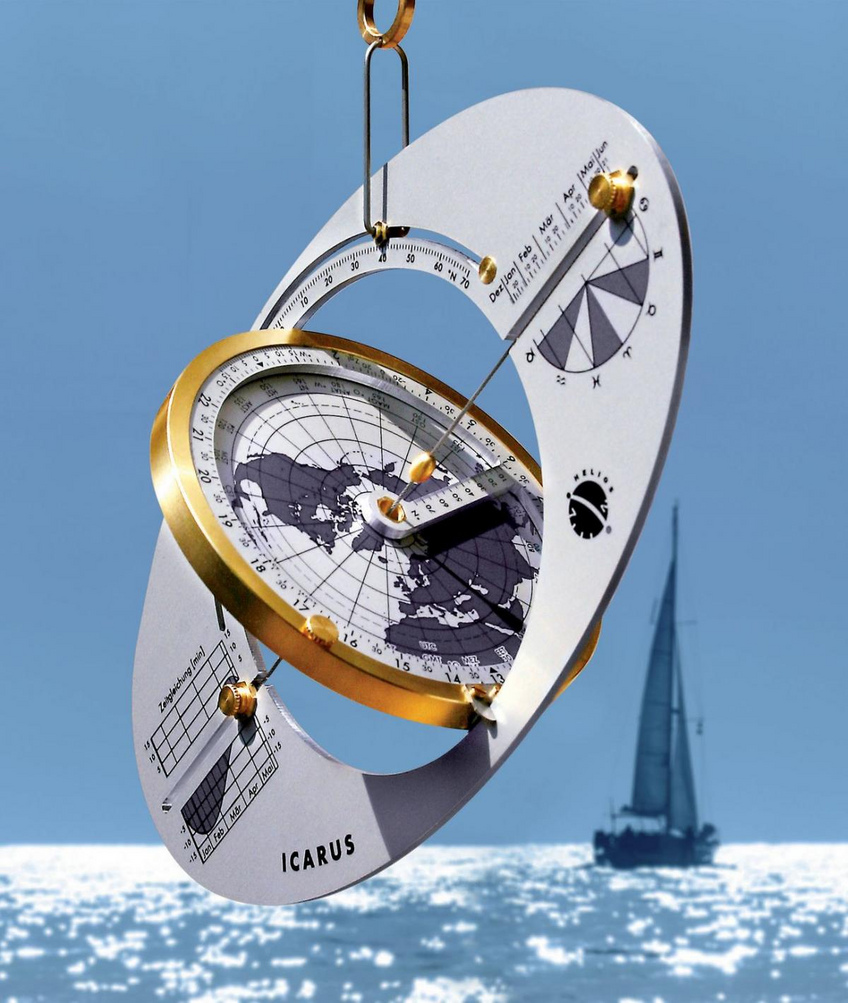
In 1884 on the initiative of Sir Sanford Fleming the international “Prime Meridian Conference” took place in Washington DC. It was decided that the prime meridian should run through the Royal Observatory in Greenwich near London. A fact that caused some dismay among the French delegation. It was also decided that the world should be divided into 24 timezones, each about 15° in width. Because of political borders most of the timezones do not follow this strict division, however. In large countries like Russia or China, standard time sometimes spreads over more than two actual timezones. Timezones are a great help in coordinating travel across the globe. The natural time, however, continues to live on the face of the sundial.
How a sundial works?
We live on the surface of an enormous sphere that revolves around an axis spanning from the South Pole to the North Pole. Seen from north its rotation is anti-clockwise. Thus, from the surface of the earth it looks as if the sun (and some other celestial bodies too) was rising in the east and setting in the west. The length and direction of an upright stick’s shadow could therefore be used for a rough determination of time, as well as one’s own shadow. It was shortest at noon and longest at sunrise and sunset. As a person’s height is proportional to the size of his feet, it was very practical to arrange meetings in this manner: “Let’s meet on the market square when our shadows have reached the length of five feet”. This would work for small persons equally well as for tall ones. Later on someone realised that the sun and all the stars in fact revolved around a point in the sky, the celestial north pole (on the southern hemisphere it is of course the southern pole). Luckily enough there is a star very close to the north pole: the Polar Star in the constellation of the little dipper (Ursus Minor).
In the second half of the 15th century the first European sundial-builders started using gnomons that were parallel to the earth’s axis, pointing to the Polar Star. They had probably learned this from accounts the crusaders had brought home from Arab countries, where astronomy was far more developed than in Europe. Sundials with a gnomon parallel to the earth’s axis were for the first time able to indicate hours whose length didn’t change with the seasons. They thus corresponded with the way mechanical clocks counted time. The latter had been introduced in the 14th century thanks to the monasteries’ demand for timekeepers that could tell the time even when there was no sun.
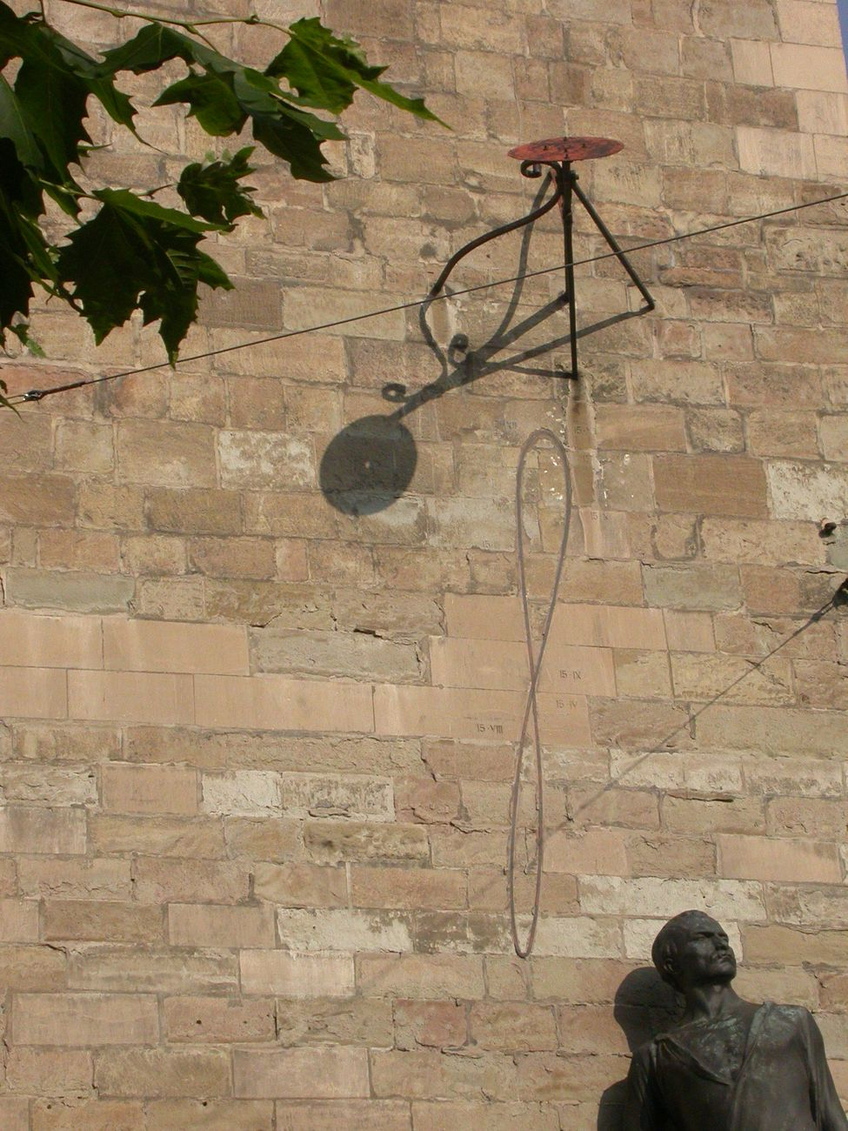
The Equation of Time
Some brands of high horology fabricate complicated watches that can display the so-called equation of time. This device used to be useful when clocks and watches were still adjusted referring to a precision sundial. Nowadays, when we can read the correct standard time on almost any electronic device, this function has lost its meaningfulness to such an extent that even the watchmakers producing it have often forgotten what it used to be for.
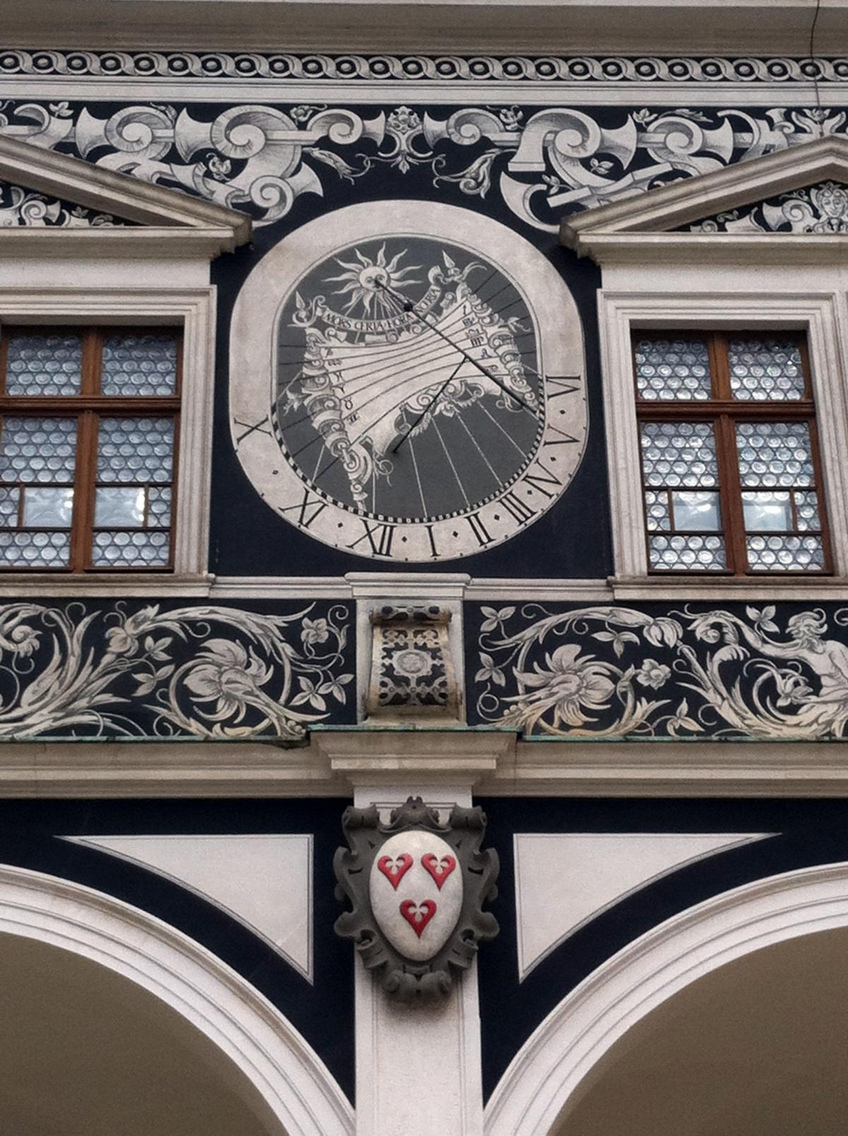
On its path around the sun the earth describes an ellipse. The distance between the two celestial bodies therefore varies during one year. Additionally, the axis of the earth is tilted by roughly 23.5° in relation to the plane of its path around the sun. These two factors are responsible for the fact that all sundials on Earth simultaneously are sometimes ahead, sometimes behind standard time. This phenomenon is repeated each year and can reach deviations of up to 16 minutes. Being aware of the exact deviation enables the user of a sundial to read the standard mean time with great precision. As a guideline, tables with the daily divergences were printed, making it possible to adjust mechanical timepieces to standard time even before the invention of the telegraph or the radio that nowadays broadcasts the precise time across the world.
